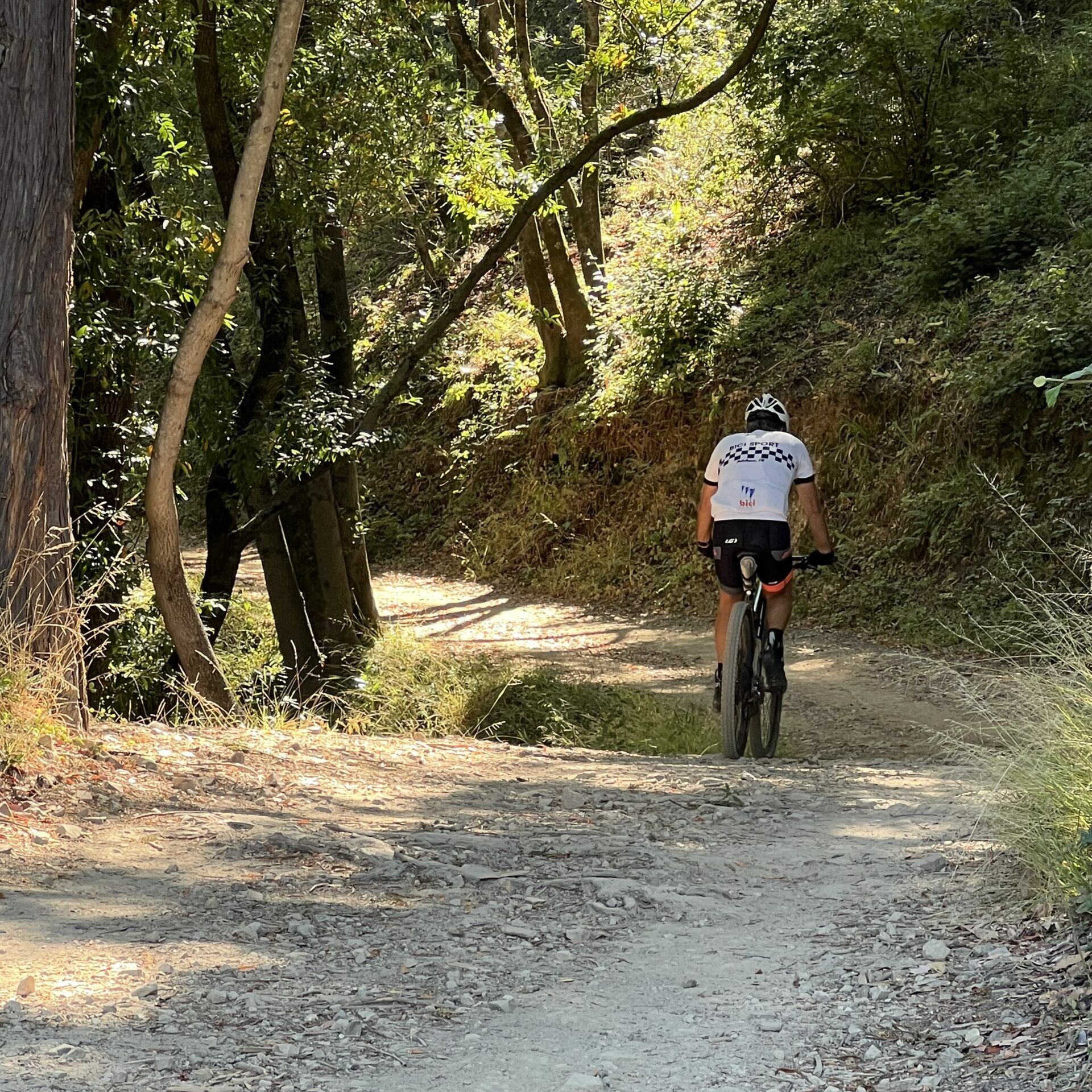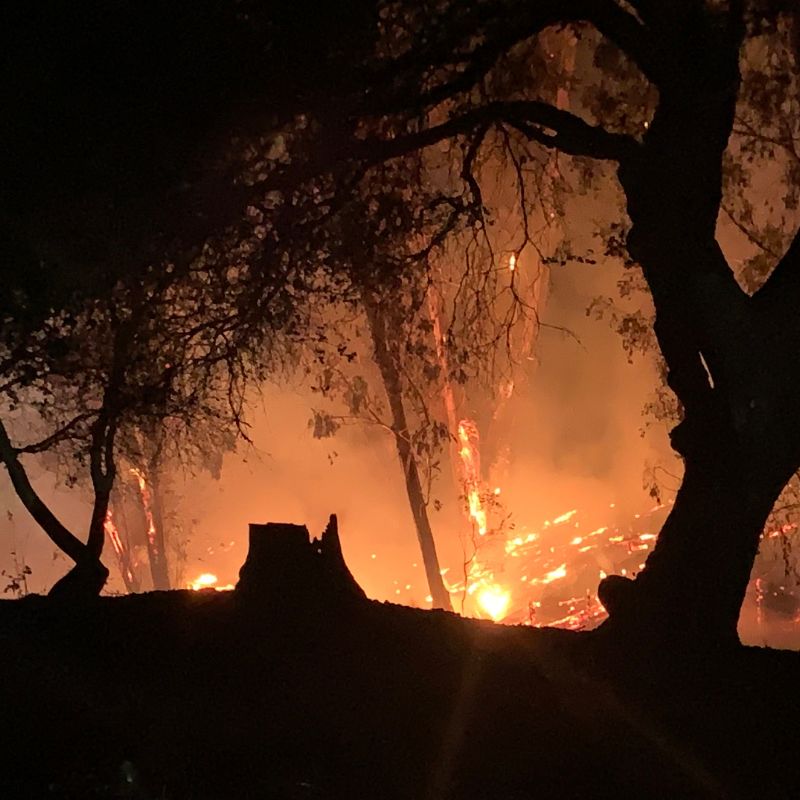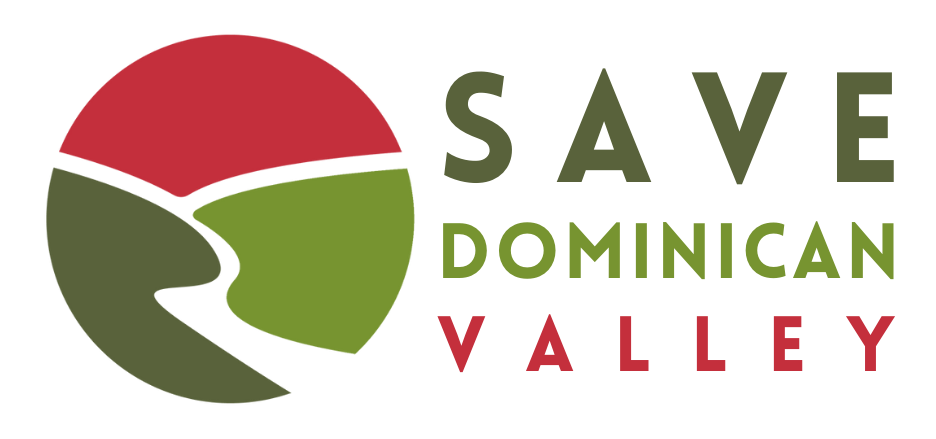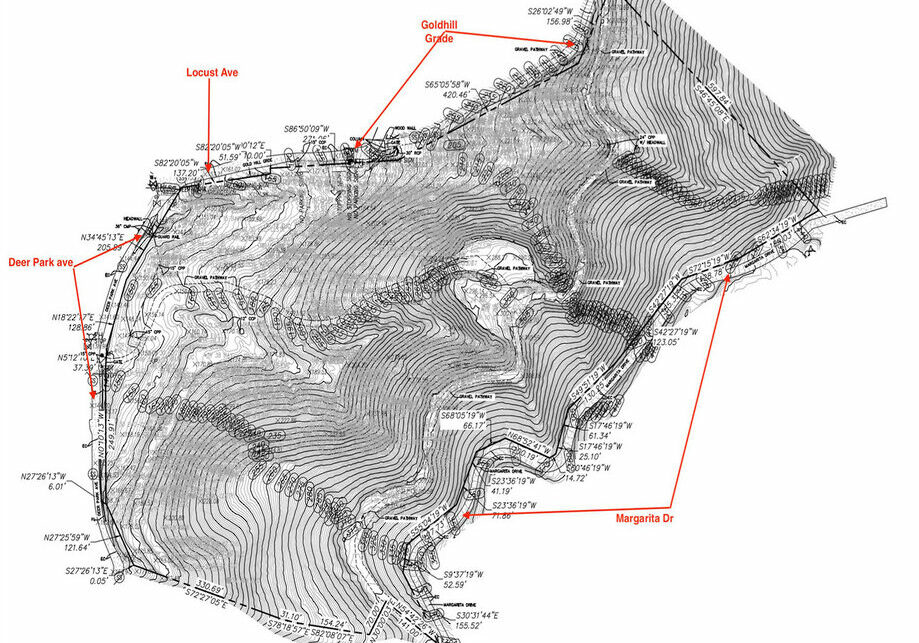History
We respectfully acknowledge Dominican Valley is the unceded ancestral home of the Coastal Miwok people. For millennia, its plants, animals and waterways provided sustenance and the natural materials needed to sustain a thriving Miwok community.
Beginning in 1769 the Spanish moved north from established Mexican territory and began colonizing California through the Franciscan establishment of presidios and missions. In 1844, Mexican governor Manuel Micheltorena granted Timothy Murphy, one of Marin County's first Irish settlers, a 21,679 acre land grant called San Pedro, Santa Margarita y Las Gallinas. The land now known as Dominican Valley and the surrounding area was part of the grant. Subsequently the parcel and adjoining land were owned by William and Julia May Babcock. Julia Babcock sold the land and their home, Edgehill Mansion, to Dominican University in 1920.
Since the acquisition by Dominican University, areas of the open space were used as a garbage dumpsite, and more recently the university allowed large amounts of wood chips to be dumped in multiple locations on the property. The dumping on the property and its impact on any proposed development was discussed in the initial Marin Independent Journal article about the sale of the property.
Dominican University considered building additional student and faculty housing, however, an Environmental Impact Report (EIR) conducted in 1998 determined the parcel was not suitable for development.
Students, faculty, neighbors and Marin County residents and visitors have consistently used the open space for more than a century. During the pandemic, it became a frequently used recreational resource for a diverse group of San Rafael residents.

Location
Dominican Valley is in Central San Rafael on the northern edge of the Dominican University campus. It is bounded by Gold Hill Grade, Locust Ave, Deer Park Ave, Margarita Dr. and Highland Ave.
The land includes 2 frequently used open space trails; the Highland Spur that starts at the intersection of Highland Ave. and Margarita Dr., and Gold Hill Grade located at the end of Locust Ave. These trails provide public gateway access to the contiguous open spaces of Harry Barbier Memorial Park, San Pedro Mountain Preserve and China Camp State Park.
Natural Environment
Dominican Valley is a wooded riverine/wetlands landscape. At its highest elevation, it offers views of San Francisco Bay, Mount Tamalpais and San Rafael.
The waterways on the land, which include Sisters Creek and its 6 tributaries, are protected by State and Federal authorities.
The creek and tributaries are listed in the National Wetlands Inventory map published by the U.S. Fish and Wildlife Service. They also qualify as waters of the state and as such are regulated by the San Francisco Regional Water Quality Board and under the state's Porter-Cologne Water Quality Control Act. In addition to its federal and state protections, Marin County has identified Sisters Creek as a major East Marin stream.
The 21-acre open space is home to many species of native and non-native plants. Blue Gum Eucalyptus form the highest tree canopy. California oaks, madrone, coast live oak, bays, toyon and manzanita thrive as well.
Seasonal Dominican Falls
This arboreal environment provides canopy protection for streams, animals and plants, while the seed crops produced by many of these trees are important food sources for wildlife.
While walking in Dominican Valley, visitors may see many species of plants, including Mt. Diablo cottonweed, Gaidner’s yampah, Napa False indigo, Tiburon Buckwheat and Marin Western Flax. Spring blooming California poppies, Douglas iris, ground iris, shooting stars, blue eyed grass and checker mallow dot the landscape. In the Summer, the air is fragrant from the white blooms of the Sticky Monkey flower.
Dominican Valley is home to a multitude of mammals, birds, fish, reptiles and amphibians. All play their part in the ecosystem. Thus far, local experts have identified 65 different species of birds nesting and breeding in the area, including the endangered Northern Spotted Owl.
Other birds of note include the Olive-sided Flycatcher, Cooper’s hawk, sharp-shinned hawks, golden and bald eagles, chestnut-backed chickadee and the spotted Towhee.
Mammals that live on the land include the dusky-footed woodrat, deer mouse, black-tailed deer, squirrels, coyote, grey fox, bats, jackrabbits, and the rarely spotted American Badger.
Joining the mammals in Dominican Valley is a wide range of amphibians, snakes, lizards and insects. California newts, California slender salamanders, gopher snakes, bushtit ringneck snakes, buttons banana slugs, and western fence lizards all reside in the area.
Lady beetles, Western honeybees, Anise Swallowtail and California tortoiseshell butterflies are just a few of the insects to be seen.
We’d love to know what you see and hear on your next visit to the open space!
Upload your visual and auditory clips here.
Fire Safety and Infrastructure Concerns
Dominican Valley and the surrounding neighborhoods are designated Wildland Urban Interface areas in the 2023 Marin County Unit Strategic Fire Plan & Community Wildfire Protection Plan. As such, the county considers them to be hazardous in terms of fire access and protection.
The area's proximity to open space, the very narrow roads and limited ingress and egress routes have been noted by the San Rafael Fire Department as concerns in the event of an emergency.
A recent example of the dangers and constraints of the area occurred on Monday, June 6, 2022, when a 2-alarm vegetation fire, labeled the “Magnolia Fire”, began at approximately 9:50 p.m. on the Dominican Valley property near Deer Park Avenue. It quickly raced up the hill, threatening homes, and human lives and requiring some neighbors to evacuate.
Two way traffic is impossible on many sections of Deer Park Ave, impeding rapid evacuations and limiting the ability for emergency personnel to reach the affected area. In the case of the Magnolia Fire, the fire department set up equipment in a home owner's driveway.
The San Rafael Fire Department (SRFD) did an exceptional job of containing the blaze, saving homes on Deer Park, Highland and Margarita Avenues. Firefighters on the scene told residents that the lack of wind that night was a significant factor in their ability to quickly contain the blaze.
In a June 2023 conversation with a resident, the San Rafael Assistant Fire Chief said the existing roads are inadequate, as they do not meet the width, turn radius, and other California Fire Code criteria and cannot be brought up to current California Fire Code standards because of encroachment on private property and the slope of land adjacent to the roadways, but all new infrastructure needs to be fully compliant.

In addition to becoming choke points in the event of an emergency, the narrow hillside roads are susceptible to collapse in winter storms or earthquakes. A section of Highland Ave. collapsed in the Winter of 2023, sending earth and debris perilously close to a home and closing the road. It has not yet been repaired and reopened. Such events remove one of the few necessary egress paths for the neighborhood.


A leading Marin County expert in traffic analysis assessed the area in July 2023 and issued the following conclusion:
“The proposed project could include up to 80+ residences and will generate a significant amount of vehicle traffic, both residential and deliveries, and will likely create conflicts with the current college traffic and affect area circulation in terms of traffic operation, safety, delays, and the overall traffic LOS (levels-of-service).
The streets in the area surrounding the project, such as Gold Hill Grade, Deer Park Avenue, and Margarita Drive are narrow streets and some street segments are well under 20 feet wide but must provide for two-way vehicle travel. This will be problematic for garbage truck access and emergency vehicle access in case of fire and other emergencies. Further, many of the streets near the project site are narrow and without sidewalks. Any additional vehicle traffic will likely have a negative impact on pedestrians and bicyclists. These concerns must be evaluated and addressed."







































